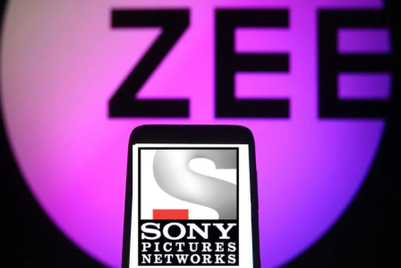
“Boycott Smithfield — Americans don’t want the Chinese involved with our food supply,” growled an angry American on Facebook when he learnt the Virginia-based pork company was bought by China’s Shuanghui for US$4.72 billion last September.
It was a similar tale in January when Suntory, the Japanese drinks firm, took control of Beam Inc, producers of the Jim Beam and Maker’s Mark bourbon brands.
“Sad to hear Jim Beam / Maker’s Mark was sold to Japan. I’ll have to find another bourbon. Buy made in America. Don’t line foreign pockets,” wrote a peeved ex-US serviceman on Twitter.
These comments aren’t coming from a small minority of die-hard patriots — it’s becoming increasingly common for Westerners to take to social media and express their outrage when domestic brands are acquired by Asian firms, with boycott petitions and websites quickly sprouting up after deals are made public. Such outrage has obvious implications for the Asian companies behind the takeovers, which in turn means their PR firms are often firefighting potentially brand-damaging sentiment around mergers and acquisitions.
“In the takeover of iconic businesses with deep emotional attachments, like Jim Beam, consumers first and foremost need reassurance that there won’t be drastic alterations to their beloved brands,” says FTI Consulting senior director Leo Wood.
He believes this reassurance in today’s digital era goes beyond basic PR and must include comprehensive stakeholder engagement. This is something companies need to deliver through a variety of integrated platforms and channels to provide key messages to different audiences.
It is a view Newgate Communications managing partner Richard Barton shares: “Any cross-border investment requires a communications programme built around multiple stakeholders. The focus in the late 1990s was on the hard issues of finance and legal compliance. Today it is arguably even more about the soft issues of community engagement, employee relations and political engagement.”
A wide-ranging engagement and communications strategy in today’s digital era requires online specialists and community managers. Companies should deploy integrated advisory services to manage stakeholder expectations and generate support.
In addition to influencing, monitoring and responding to social media conversations, more sophisticated counsel focused on regulatory issues and the cultural implications associated with cross-border acquisitions is critical to managing reputation effectively.
These components, says Wood, “fall alongside the core, standard financial communications practices necessary to help articulate the investment proposition to the financial community”.
However, there was not the same consumer backlash when Lenovo acquired US multinational IBM’s PC division in 2005, nor in 2009 when Chinese automotive manufacturing company Geely bought Sweden’s Volvo. Were consumers less fearful of Asian brands back then, less opinionated, or is it all down to the growth of social media giving discontented voices the platform they need?
Partly the latter, says Jye Smith, Asia-Pacific head of Mediaco at Weber Shandwick. “The level of outcry in 2005 would be significantly smaller given the change in internet populations around the world,” he says. “I believe we’re just as opinionated today as in 2005. However, the way we express those opinions has changed forever.”
He believes that brand affinity is a major factor in the level of anger, citing Jim Beam’s long-established heritage and American lifestyle image — something, it could be argued, that IBM’s PC division had lost by the time the sale took place.
“Lenovo’s IBM takeover was an impressive example of how to do it” says MHP Communications CEO Emma Smith. “Lenovo showed respect for the IBM brand and moved swiftly to ensure the company was international in composition and outlook. It’s certainly true that social media has amplified public angst, so perhaps neither case would be quite so easy nowadays.”
Many leading PR firms are now developing partnerships and using monitoring tools in-house to identify escalating situations, helping them to become better equipped to deal with any problems. With the internet and social technologies often the catalyst for rumour and misinformation to circulate quickly and become accepted as truth, “it is critical that online communications are managed thoughtfully and with great responsibility”, says MHP’s Smith. “Even Facebook and Weibo and more ‘consumer’ channels need to be authored with care.”
The concern for PR agencies is that consumer resentment of foreign acquisitions of brands they hold dear can lead to bigger problems. Uncensored public opinion that appears on the web can rapidly snowball into mainstream media coverage and even attract political attention.
This is something the acquiring company must be mindful of, explains Wood, who advocates that PR firms make it clear to clients in such situations to expect adverse consumer reaction, but that generally it should not damage the brand. “Rarely does foreign ownership actually alter anything substantive about what a brand represents. That said, social media buzz and the citizen journalism movement can impact the performance of the brand, especially if investor confidence is shaken due to negative consumer sentiment, diminished brand loyalty and reduced consumption”.
There are a number of ways in which the new parent company, in association with their PR agency, can look to reassure consumers, or in extreme cases, try and win them back. Being open with consumers is high on the list of ‘must dos’ from PR professionals in this situation, ensuring that consumers are aware of positive changes and don’t need to fear that purchased companies will be swiftly relocated to Asia, with the subsequent loss of jobs in their home markets.
“An objective for professional communicators during any transaction is to show that the positive traits of the new owner — balance sheet, experience, distribution — will complement the takeover target,” says Damien Ryan, owner of Ryan Financial.
This is an area KPMG International director of Communications Mark Walters believes Chinese businesses do well in. “Chinese businesses are increasingly savvy when it comes to retaining customers and brand value. For example, many Chinese businesses will retain overseas production and design while in many cases actually improving product quality and reliability.”
With Asian takeovers of Western firms inevitable in the future, it seems the key to keeping the brand intact and consumer unrest at a manageable level is to be aware of the risks, continually monitor the situation as it unfolds — and then react accordingly.
According to Mediaco’s Smith, this should centre on a ‘considered and authentic approach to communications’ with regular feedback sessions and open dialogue with consumers. “Both corporate and large lifestyle brands have benefited from creating a dialogue with their consumers on open platforms” he says. “This, and addressing concerns, can certainly win back consumer sentiment.”
AGENCY COMMENT Set up real-time listening posts
Marc Ha, MD, Text100 Singapore & Malaysia
 Across our range of clients, companies have already been evolving their communications functions to include both offline and online channels. As best practice, monitoring offline and online channels is critical during major announcements such as M&As and around major issues and crisis.
Across our range of clients, companies have already been evolving their communications functions to include both offline and online channels. As best practice, monitoring offline and online channels is critical during major announcements such as M&As and around major issues and crisis.
Setting up real-time listening posts enables us to track and analyse sentiment, arming us with essential insights that can inform how we message and engage various stakeholder groups in the days following an announcement. Our experience working with corporate communications and investor relations functions within our clients’ organisations has shown us that both Western and Asian brands are definitely taking online sentiment very seriously. For example, last year Text100 conducted a crisis simulation exercise for an Asian multinational, specifically around a scenario where social media quickly escalated a product incident into a major crisis that affected multiple stakeholders, including consumers, regulatory bodies and special interest groups.
The speed and breadth at which misinformation and negative sentiment can spread multiplies over social media. We’re talking about escalating from issue to crisis within half a day. Therefore, setting up real-time listening posts needs to become a hygiene factor, especially for something as sensitive and complex as an M&A deal.


.jpg&h=334&w=500&q=100&v=20250320&c=1)
.jpg&h=334&w=500&q=100&v=20250320&c=1)

.jpg&h=334&w=500&q=100&v=20250320&c=1)
.png&h=334&w=500&q=100&v=20250320&c=1)
.png&h=334&w=500&q=100&v=20250320&c=1)





.jpg&h=268&w=401&q=100&v=20250320&c=1)



.jpg&h=268&w=401&q=100&v=20250320&c=1)

.png&h=268&w=401&q=100&v=20250320&c=1)